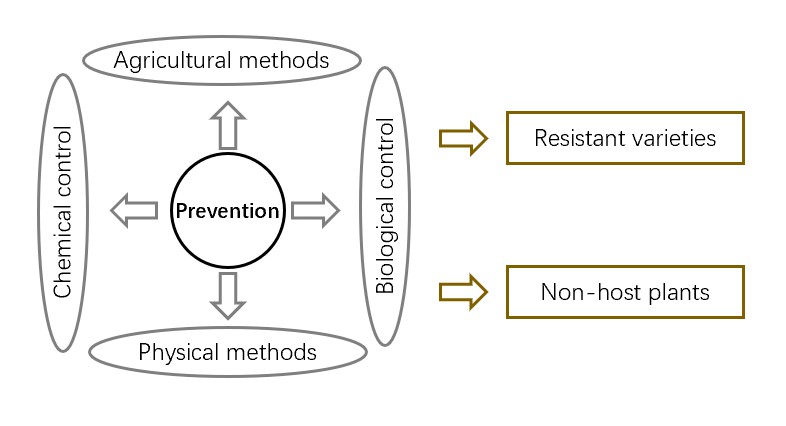Methods of nematode control involve chemical, physical, agricultural, and biological methods. Using chemical nematicides pollutes the environment and is prone to residues; physical methods using heat and electricity to disinfect are tedious and unsustainable, and intercropping and crop rotation do not apply to all crops. Biological methods of manipulating special root secretions into functional fertilizers of biological origin are the best option for the development of sustainable agriculture. Inter-root regulation is playing an increasingly important role in agricultural production as a new agricultural technology tool.
 Fig.1 Selection of methods for controlling nematode disease.
Fig.1 Selection of methods for controlling nematode disease.
Lifeasible provides an analysis of the induced root secretions by rhizosphere microorganisms with decades of experience. We develop an advanced platform equipped with advanced instruments and professional staff to perform proteomic analysis with a high standard. We deliver satisfactory and reliable results and reports on time to our customers worldwide.
Lifeasible offers services covering the induced root secretions by rhizosphere microorganisms to meet your research demands. With years of experience in the biological industry, our professional platforms can help clients solve types of difficulties. If you are interested in our services or have any questions, please feel free to contact us or make an online inquiry.
Lifeasible has established a one-stop service platform for plants. In addition to obtaining customized solutions for plant genetic engineering, customers can also conduct follow-up analysis and research on plants through our analysis platform. The analytical services we provide include but are not limited to the following:
STU-CRISPR System Improves Plant Genome Editing Efficiency
April 19, 2024
Application of Exosomes in Facial Beauty
April 12, 2024